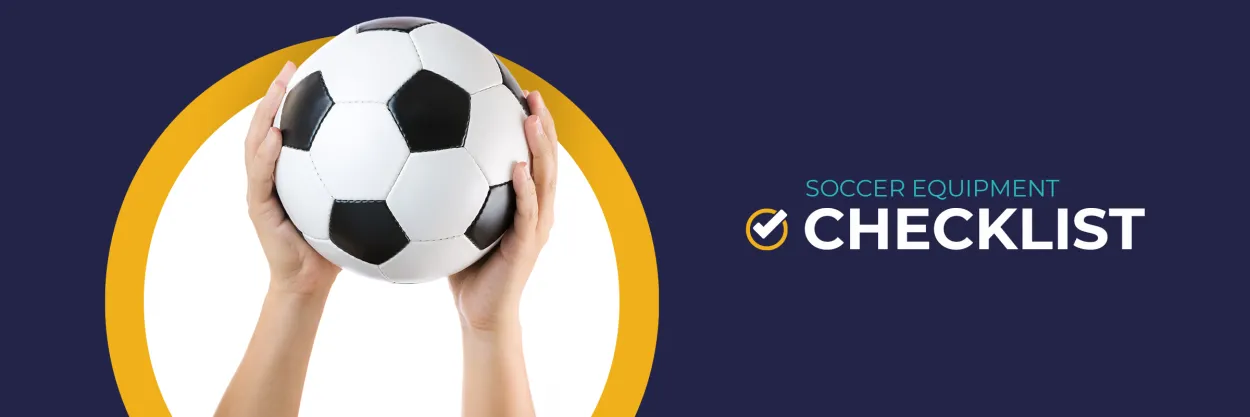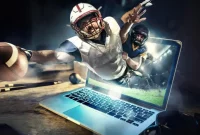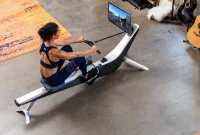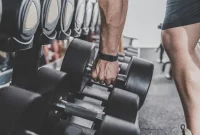When it comes to participating in sports, having the right equipment is crucial for both performance and safety. In this article, we will provide you with the essential checklist for sports equipment, ensuring that you are well-prepared and equipped for your sporting endeavors.
Must-Have Items for Every Athlete
When it comes to participating in sports, having the right equipment is crucial for optimal performance and safety. Whether you are a professional athlete or simply enjoy playing sports recreationally, here is a checklist of essential items that every athlete should have:
1. Proper Footwear
A sturdy and well-fitting pair of athletic shoes is essential for any athlete. The right footwear provides support, stability, and helps prevent injuries specific to your sport.
2. Comfortable Apparel
Wearing comfortable and breathable clothing allows for ease of movement and helps regulate body temperature during physical activity. Opt for moisture-wicking fabrics that keep you dry and comfortable throughout your workout.
3. Protective Gear
Depending on the sport you engage in, protective gear such as helmets, mouthguards, shin guards, or padding may be necessary. Always prioritize safety and ensure you have the appropriate gear for your chosen activity.
4. Hydration Accessories
Staying hydrated is essential for peak athletic performance. Equip yourself with a reusable water bottle or a hydration pack to ensure you have easy access to fluids while training or competing.
5. Sports-specific Equipment
Each sport has its own set of equipment requirements. From racquets and balls to goggles and bats, make sure you have the necessary tools for your chosen activity.
6. First Aid Kit
Accidents happen, so it’s crucial to have a basic first aid kit on hand. Include items like bandages, antiseptic wipes, and ice packs to help treat minor injuries and reduce discomfort.
In conclusion, having the right sports equipment is essential for athletes of all levels. By ensuring you have these must-have items, you can optimize your performance, stay safe, and enjoy your favorite sports to the fullest!
How to Evaluate Sports Gear Quality
When it comes to sports equipment, quality is of utmost importance. Whether you are an amateur or a professional athlete, using gear that meets the necessary standards is crucial for your safety and performance. Here is a checklist to help you evaluate the quality of sports gear:
-
Material:
Check what materials are used to make the product. Look for durable, high-quality materials that can withstand the demands of your sport. For example, in soccer, leather or synthetic leather is commonly used for balls due to their durability.
-
Construction:
Examine how the gear is constructed. Pay attention to stitching, seams, and any visible defects. Strong and secure stitching is essential for items such as gloves or protective padding, ensuring they don’t fall apart during intense use.
-
Fit:
Try on the gear to ensure a proper fit. Ill-fitting equipment may not provide the necessary support or protection, increasing the risk of injury. For items such as helmets or shoes, make sure they are snug but not overly tight.
-
Performance:
Consider the gear’s performance capabilities. For a tennis racket, check its power, control, and maneuverability. For shoes, assess their grip and stability. Research customer reviews and ratings to gather insights on how the equipment performs in real-life situations.
-
Safety Standards:
Verify if the gear meets the required safety standards. Look for certifications from reputable organizations or governing bodies specific to your sport. These certifications ensure that the equipment has undergone rigorous testing and meets necessary safety guidelines.
Budget-Friendly Equipment Choices
When it comes to sports, having the right equipment is essential for a great performance. However, investing in top-of-the-line gear can often be costly. Fortunately, there are budget-friendly options available that can still meet your needs without breaking the bank. Here are some essential equipment choices that offer both quality and affordability:
1. Entry-Level Sports Shoes
Instead of splurging on expensive branded shoes, opt for entry-level sports shoes that provide adequate support and comfort. Many affordable brands offer options specifically designed for various sports activities.
2. Used Equipment
Consider purchasing used sports equipment, such as rackets, clubs, or bikes. You can often find high-quality items that have been gently used at a fraction of the original price. Just make sure to thoroughly inspect the items for any damage or wear before making a purchase.
3. Generic Sporting Goods
Generic sporting goods can be a cost-effective alternative to brand-name equipment. While they may not have the same prestige, they can still serve their purpose effectively. Look for generic options for items like soccer balls, basketballs, or tennis balls.
4. Outlet Stores and Clearance Sales
Visit outlet stores or keep an eye out for clearance sales to find great deals on sports equipment. These stores offer discounts on last season’s gear or overstocked items, providing an opportunity to purchase high-quality equipment at significantly reduced prices.
5. Online Marketplaces
Explore online marketplaces where individuals sell their used sports equipment. Platforms like eBay or Facebook Marketplace can give you access to a wide range of options at competitive prices. Just be sure to verify the condition and authenticity of the items before making a purchase.
By considering these budget-friendly equipment choices, you can ensure that you have all the necessary gear for your favorite sport without straining your wallet. Remember, it’s not always necessary to splurge on expensive equipment to achieve your sports goals.
The Lifespan of Sports Equipment
Sports equipment is an essential component for any athlete or sports enthusiast. Whether it’s a tennis racket, basketball shoes, or a golf club, having the right equipment is crucial for performance. However, it’s important to understand that sports equipment has a limited lifespan.
The lifespan of sports equipment can vary depending on various factors. One of the main considerations is the frequency of use. Regular use of equipment can lead to wear and tear, causing them to deteriorate faster. Additionally, the intensity of usage and the conditions in which the equipment is used also play a role.
Another factor impacting the lifespan of sports equipment is the quality and maintenance. Equipment made from high-quality materials and designed to withstand heavy usage will generally last longer. Regular cleaning, proper storage, and maintenance can also extend the lifespan of the equipment.
It’s essential for athletes and sports enthusiasts to regularly inspect their equipment for signs of damage or deterioration. Cracks, loose parts, or worn-out grips indicate the need for repair or replacement. Using damaged equipment can compromise performance and even lead to injuries.
Understanding the lifespan of sports equipment is important to ensure optimal performance and safety. As a general rule, it’s recommended to replace equipment once it shows significant signs of wear and tear or no longer meets the required standards for the particular sport.
Storing and Transporting Your Sports Gear
When it comes to sports equipment, proper handling and storage are essential to ensure their longevity and keep them in optimal condition. Whether you are an amateur athlete or a professional, following a checklist for storing and transporting your gear is crucial. Here are some key points to keep in mind:
1. Clean and Dry
Prior to storing your sports gear, make sure to clean and dry them thoroughly. This is especially important for items such as jerseys, gloves, and shoes, which can accumulate dirt and sweat. Proper cleaning will prevent any odors or bacterial growth.
2. Organize and Label
Having an organized system for your sports gear will save you time and frustration. Consider using storage bins, shelves, or racks to keep everything in its place. Don’t forget to label each item or container for easy identification.
3. Use Protective Cases
Invest in appropriate protective cases or bags for fragile items like racquets, helmets, or goggles. These cases will shield your gear from damage during transportation and storage, ensuring they remain in good condition for longer.
4. Avoid Extreme Temperatures
Extreme temperatures can negatively impact the performance and lifespan of your sports equipment. Avoid storing them in areas prone to high heat, direct sunlight, or extreme cold. Optimal temperature and humidity levels will help preserve your gear.
5. Check for Wear and Tear
Regularly inspect your sports gear for any signs of wear and tear. Replace any damaged or worn-out components to maintain their functionality and safety. Ignoring such issues can lead to injuries during your sports activities.
6. Secure Transportation
When transporting your sports gear, ensure it is securely packed to prevent damage. Use padding materials, straps, or securing agents to hold everything in place. Double-check that nothing is loose to avoid any accidents while on the move.
7. Follow Manufacturer Guidelines
Always follow the manufacturer’s guidelines for storing and transporting your specific sports equipment. They often provide detailed instructions on how to maintain and care for your gear, which will optimize their performance and longevity.
By following this checklist for storing and transporting your sports equipment, you can ensure that your gear stays in top shape and ready for action whenever you need it.
Conclusion
In conclusion, having a comprehensive checklist for sports equipment is crucial for any athlete or sports enthusiast. By ensuring that you have the necessary gear, protective equipment, and accessories, you can enhance your performance, ensure your safety, and enjoy your favorite sport to the fullest.




